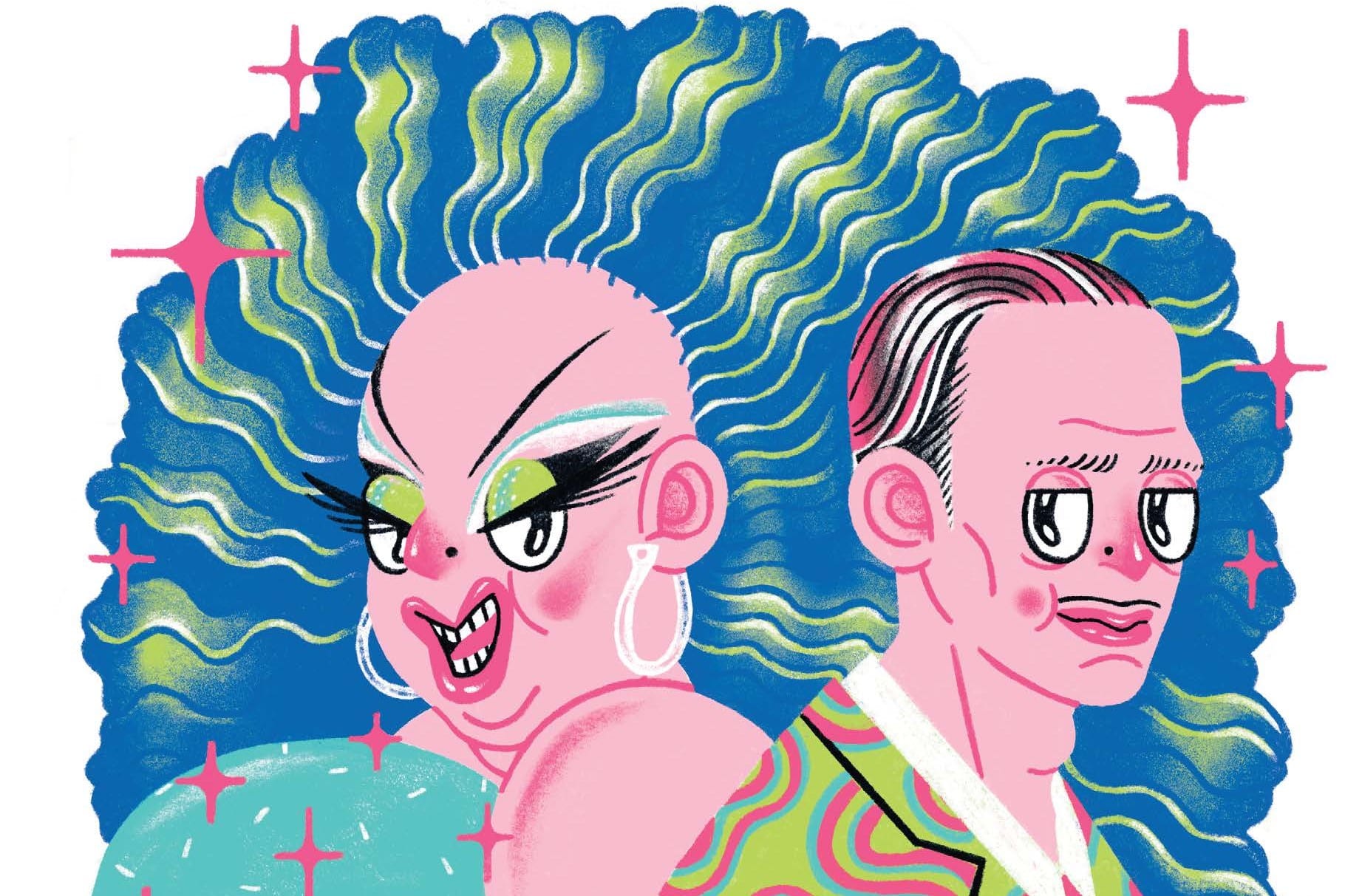Before RuPaul, before Rocky Horror, before Victor/Victoria and Barbette, there was a masked man in a cute tunic hogging the spotlight on an ancient Greek stage. His name was Telestes, and he’s the earliest known mime—an art form that, with its over-the-top gestures and three-inch-thick foundation, author Jake Hall pinpoints as one of the first iterations of drag. Hall’s new book, The Art of Drag, is a super-stylish tour through the history of the phenomenon, from Kabuki theatre to Jazz Age nightclubs to Harlem ballrooms to VH1. Several queer artists—including Jasjyot Singh Hans and Helen Li—provide the gorgeous illustrations. In this excerpt, Hall looks at the heavenly collaboration between director John Waters and his longtime muse, Divine.

“The most beautiful woman in the world… almost.” This was how cult film director John Waters described his muse Divine, the filthy, inimitable drag persona of Baltimore-born Glenn Milstead. After meeting through mutual friends in the early 1960s, Waters and Milstead quickly bonded over a love of trashy counterculture and their shared outsider status.
The duo wasted no time in building a creative relationship, recruiting a handful of queer misfits for an art collective, The Dreamlanders. Waters had already made an experimental short film, Hag in a Black Leather Jacket (1964), and together they began to work on a series of trashy, low-budget shorts. The results showed that Divine could take on any role. There was the deranged, dragged-up Jackie O in Eat Your Makeup (1968), who kidnapped supermodels and forced them to eat their make-up kits; then there was the homicidal, bottle-blonde pin-up of Mondo Trasho (1969). Together, they built a reputation as the art world’s most fabulous, provocative freaks.
As Divine, Milstead—who was bullied severely at school for his weight—began to embrace his body by pouring it into short, tight dresses. As the years went by, Divine’s make-up developed as Waters encouraged him to go more dramatic. This led to a distinctive signature look: bright, exaggerated eyeshadow that crept up to the edge of a severely shaved-back hairline, a radical and comical commentary on beauty standards. The look was eye-catching, but it was Divine’s filthy humour that marked her out as a star. When The Cockettes travelled to San Francisco, she donned a red lobster costume and joined them for a cover of their song, “A Crab On Your Anus Means You’re Loved.”
Divine was at her best when cracking dirty jokes and leaning into the freaky worlds of Waters’ creation. Their shared goal was to shock audiences, which meant that nothing was off-limits: from vomit and incest to lobster fetishists and rosary-strewn sex toys. They pioneered a blueprint that intrigued fans, who were as disgusted as they were fascinated.

Divine’s most infamous moment of notoriety came in 1972, when she rounded off Waters’ cult classic Pink Flamingos with one of the most iconic scenes in cinema history. Dressed in a sparkling gold blouse and a dyed-yellow wig (roots exposed, of course), her character Babs struts down the street before stopping to scoop up, and subsequently eat, a handful of dog faeces. It’s the disgusting cherry on top of a plot that also involves bestiality, cannibalism and castration—and it turned both Divine and Waters into stars.
The film was the first in a so-called “Trash Trilogy,” continuing with Female Trouble (1974) and Desperate Living (1977), which introduced their work to a wider, more bewildered audience. Divine was hailed as the filthiest person alive and Waters was her provocative partner-in-crime. Their success wasn’t limited to the silver screen. In 1980, Divine’s profile skyrocketed thanks to an unlikely music career, which spawned songs like “Jungle Jezebel,” “Born To Be Cheap” and “Psychedelic Shack.” Early single “You Think You’re A Man” even charted worldwide, leading to a series of genius primetime performances.
Divine teamed up with Waters again for a leading role in Hairspray (1988), starring alongside Debbie Harry and Ricki Lake. Directed by Waters, the PG-rated film was a marked departure from their previous work. Deliberately less filthy, it was designed to lure in a wider audience. The film had limited box office success, but a later home release did the trick and attracted a cult following. Viewers were buying into Waters’ wacky world—the film landed a fanbase that led to a later Broadway musical and 2007 film remake.
Sadly, Hairspray was to be the duo’s last collaboration. Divine died of a heart attack just months after Hairspray’s release, leaving behind such a legacy that People magazine named her “The Drag Queen of the Century.” Together, John Waters and Divine brought filth, wicked humour and an embrace of total freakiness to a global audience. Theirs remains one of the most influential creative partnerships in drag history.

Text by Jake Hall and art by Helen Li from The Art of Drag © 2020 Nobrow Press


 Why you can trust Xtra
Why you can trust Xtra


